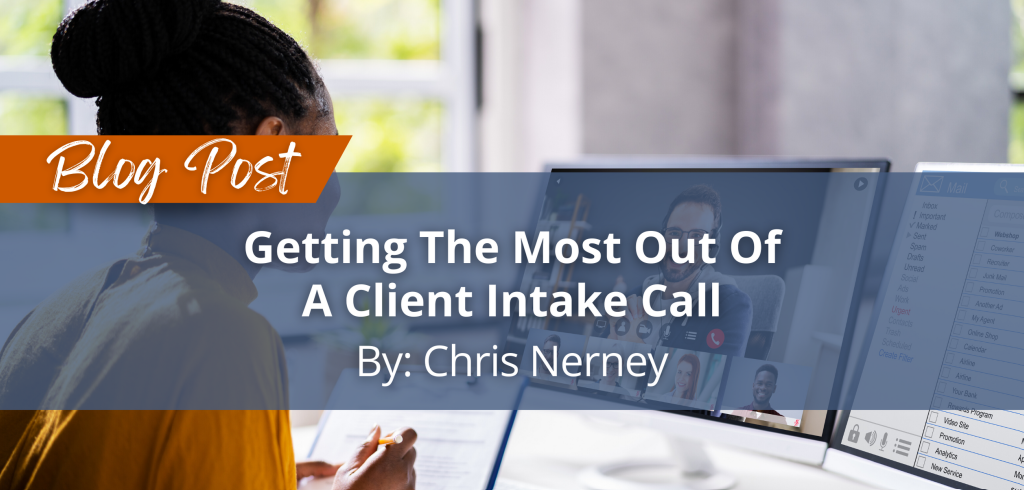Healthcare marketing and public relations agencies work closely with clients on crafting effective messages designed to gain the attention of (and prompt action from) their potential customers, investors, media outlets, awards organizations, conference organizers, and other target audiences.
Clients and agencies routinely rely on email and collaborative platforms such as Slack and Teams to communicate about messaging ideas and strategies. Still, there’s no substitute for live, verbal conversations. And while meeting in person is always best, the pandemic made Zoom calls a simple and convenient way of life in the professional world. Other than not knowing how tall everyone is on Zoom, it’s just like being in a room together!
When it comes to creating strategic, high-value content assets for clients – such as “thought leadership” bylines, case studies, and white papers – it is essential that agencies and clients arrange what we refer to as an “intake call” to discuss the asset’s target audience, goals of the content, main message, and major takeaways.
Intake calls are both a resource and an opportunity; thus, failure to take full advantage of these sessions can undermine the client’s goals and the ability of the agency to create compelling content. Unfortunately, far too many intake calls are unproductive and fail to provide the agency’s account directors and writers with enough direction to ensure quality content assets. Inevitably, the writing suffers, leading to more time wasted on editing and rewriting that could have been avoided.
Among the many reasons why intake calls go off the rails:
There’s no predetermined topic. I’ve been on my share of calls where the topic of the content asset had not yet been specified. As a result, much time is consumed just kicking around ideas. Once an idea is chosen, the call participants then have to hammer out a message and supporting themes. Without preparation, this process can be highly inefficient, which means the agency team may not get all the information they need from the call within the allotted time.
The “subject matter expert” (SME) is unprepared. Client SMEs are very knowledgeable about their areas of expertise. They’re also quite busy, particularly if the SME is a CEO. Thus, even if a topic has been preselected or an outline produced as a guide for the call discussion, the SME may not have had time to do any prep work. This also can lead to an inefficient and unsuccessful intake call.
The SME lives in the weeds. Some client SMEs can clearly and fluently communicate their company’s technology, market strategy, and product use cases. Other SMEs are CTOs. Just kidding! Seriously, though, SMEs who immerse themselves in technological details can struggle to concisely explain to a non-tech audience how their companies’ platform or tools can help customers.
Too many people on the call. Though this doesn’t happen much with start-ups, I’ve written custom content for large technology vendors as a freelancer and have been on calls with eight, 10, or more client-side participants. I’m not naming names, but one company rhymes with Oracle. These “cast of thousands” mega-calls can be incredibly frustrating and unproductive.
Intake call best practices
So what can marketing/PR agency pros do to ensure they and their clients get the most value they can out of intake calls?
Prepare a list of questions to guide the discussion. Giving the conversation a framework and some direction can make an intake call more efficient and productive. What’s the technology or healthcare challenge? What’s at stake for patients, clinicians, payers, etc.? What are the possible solutions?
Get down to business. I like to chat, and I like learning about people I’m working with. (Is that so wrong?) But when you only have 30 minutes to capture a client’s thoughts about a complex healthcare challenge, it’s best to smoothly move past initial pleasantries and get the show on the road.
Make the client verbalize the value of the asset. Even if you know the topic of the content asset, even if you have a tentative title, and even if you have bunch of on-point questions, it’s always a good idea to ask the client to explain 1) the target audience 2) what the goal of the asset is, and 3) how they would describe the asset to a colleague (“This byline is about…”). The more clarity an agency’s writer and account director have, the more likely they will produce an asset that meets or exceeds the client’s expectations.
Conclusion
Both healthcare technology startups and their marketing/PR agencies are far too busy to waste time on unproductive content asset intake calls. While it’s hard to control how ready clients are for intake calls, agency account and content directors can optimize the value of these Zoom meetings by being prepared, guiding client participants through the conversation, and seeking clear language about the topic and goals of a content asset.
